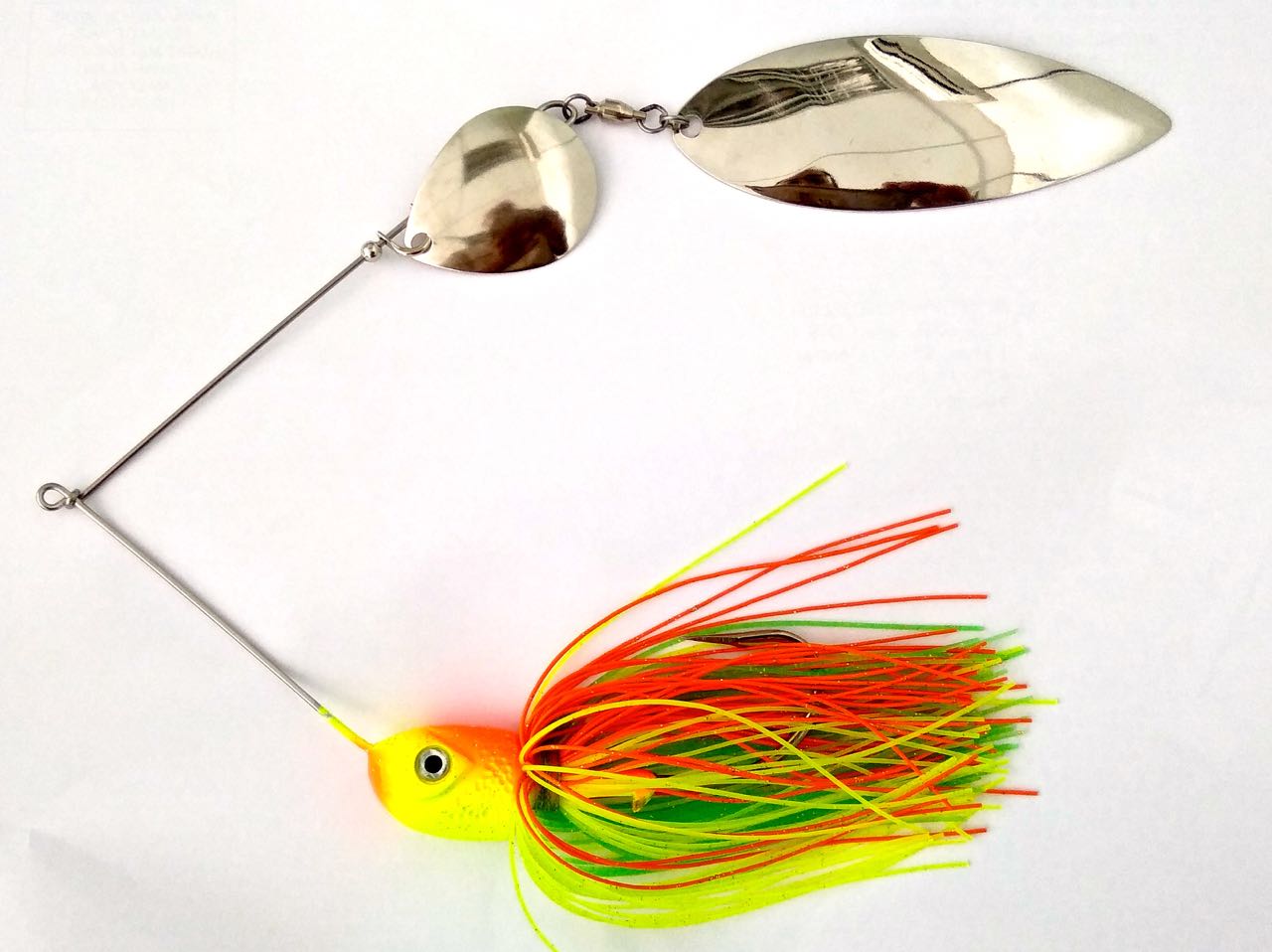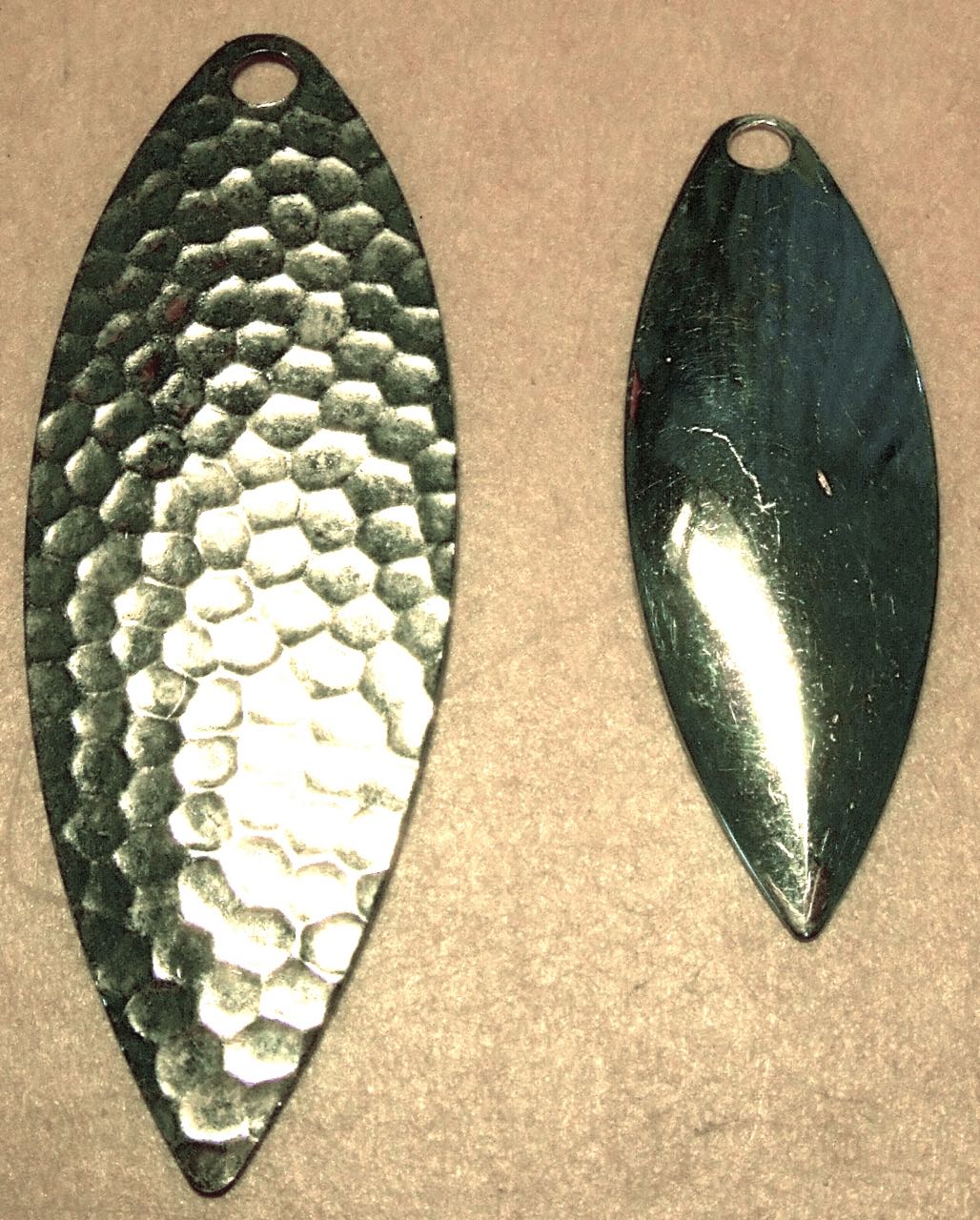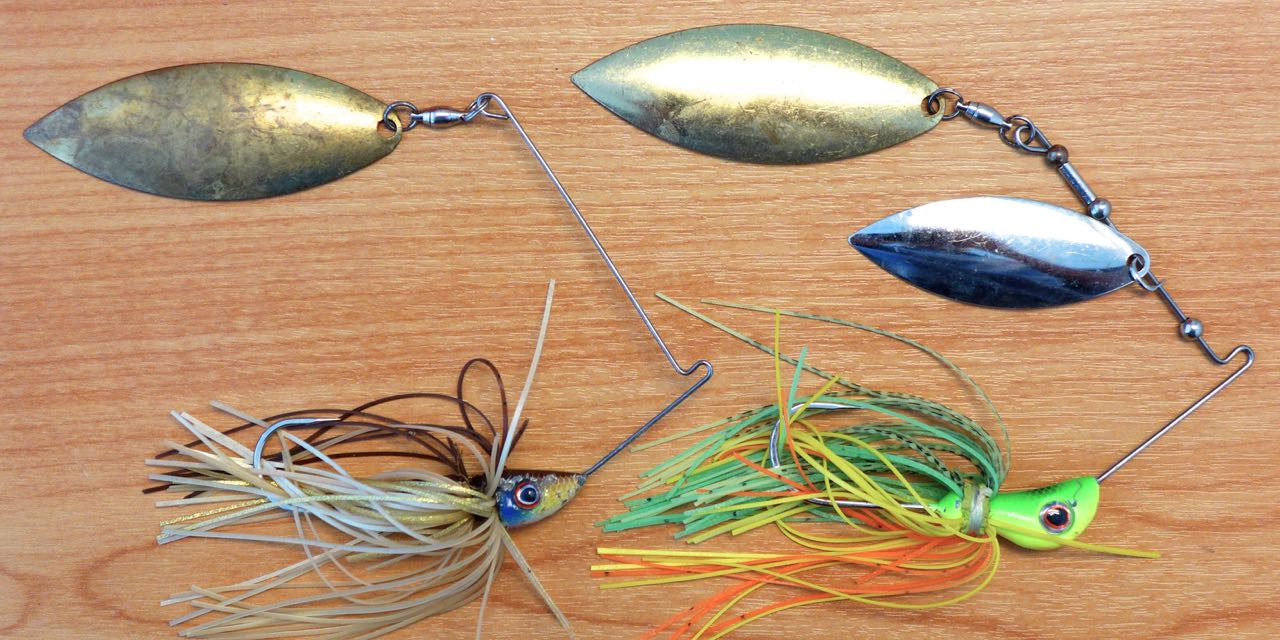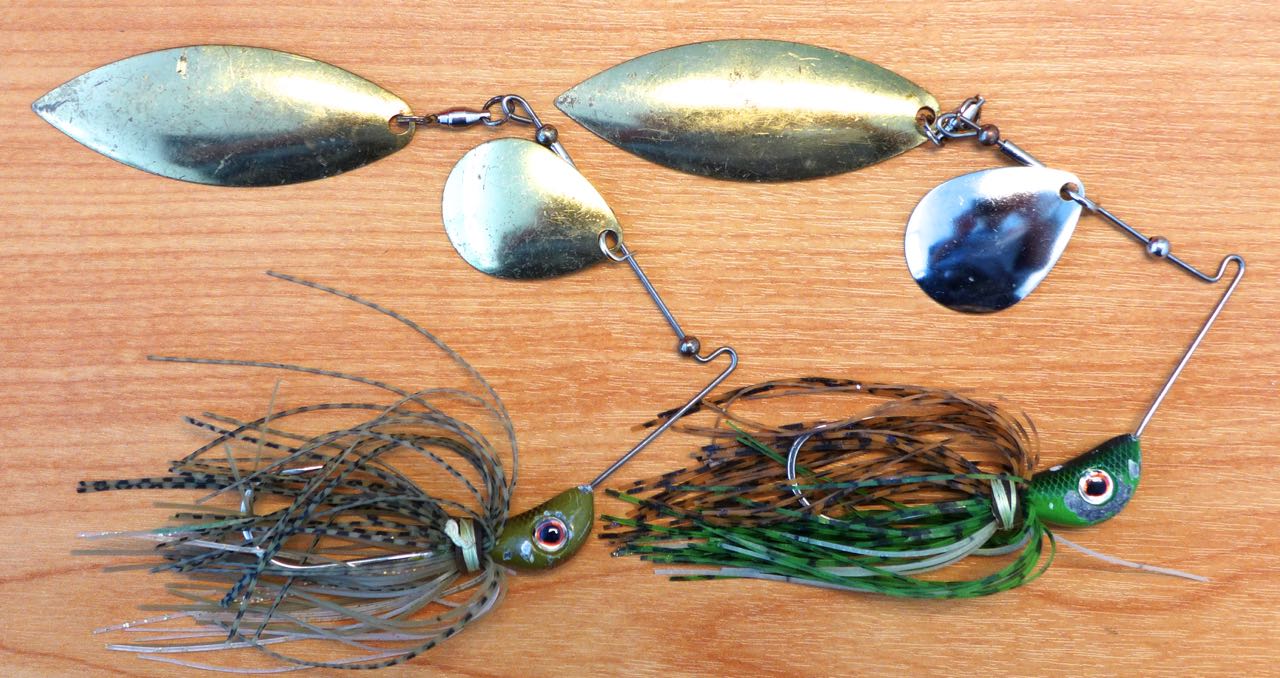
Spinnerbaits in Depth
Part
2 The Blade Types
By Christopher S.G. Tan
The angler is now given another quandary: which blade shape should they choose? There are three basic blade shape types to choose from, the Colorado, willow leaf and Indiana blade shapes. To make things more complicated, spinnerbaits often come with twin blades. Sometimes they are paired with the same blade type, at other times they are paired in different combinations, more about that later.

These blade shapes are known as the Colorado blades. They have very strong vibrations and actions; therefore also have more resistance and drag as they are pulled through the water.

The middle red blade is known as the Indiana blade as its shape and vibration is in between the Colorado (green) and willow leaf (silver) blades.
The willow leaf shaped blade is the most popular blade. It has a lot of flash and spins fast, giving the angler a whirring or whizzing feedback along the line. In contrast the Colorado blade turns slower, giving a slower but very pronounced vibration. If worked slowly, you can actually feel the Colorado blade give a thumping beat as it spins. Between these two blades, the Colorado has the stronger vibration, whereas the willow blade has a brighter or stronger flash.
I like to use the loud Colorado when the water is murky or I want to wake up the fish, or call them in from a distance. The downside of the Colorado blade is that it creates more drag and therefore more torque which tends to roll over and spin the spinnerbait if it is cranked it too fast when the weighted head is not a suitable shape and weight.
The willow leaf blade gives less resistance and has a smaller angle of rotation. Because of its lesser resistance it goes deeper than the Colorado blade, making it suitable for working deep waters. Additionally it allows for faster retrieves. Also, the tight rotation of the blade allows it to spin through weedy waters more easily. I also like it to pull through very heavily wooded water where its tight vibration does not rock the spinnerbait hook side to side, therefore making it less likely to snag on a branch.
The colorado having more resistance, pulls the spinnerbait closer the surface and therefore is a good shallow running noisy lure, but it also makes a very good lift and drop spinnerbait due to its ability to flutter down slowly.
The Indiana blade is sort of in between the willow leaf blade and the Colorado blade. It is less cupped and longer in length than the Colorado blade, shorter than the long willow leaf shaped blade. Therefore the vibration is less pronounced than the Colorado but more than the willow. I rarely see the Indiana blade these days.
Among the premier spinnerbait companies it is common these days to see slight variations or tweaks to these primary blade patterns. A willow may have a greater cup, or you may see some outrageous blade shapes, designed to provide a different action/vibration to the regular primary blade shapes.
Blade sizes
The industry has an approximate sizing standard for the blades, which helps when ordering blades over the internet. However, the size does vary from company to company. For light spinnerbaits I would use size 3 or 4 blades, but when I prefer a strong thumping vibration from a Colorado blade I would prefer a size 5 or even 6 blade, which would have to be matched accordingly to a heavy (at least 3/4oz / 20gm or more) head.
Double or twin blades.
A common configuration is to use two blades in a spinnerbait. However it should be noted that when using a double blade setup, the vibration is less or different. A single blade gives out more pronounced vibration, whereas a double blade setup seems to have a more muffled vibration, as the two twirling blades cancel out each others vibrations.
The twin blades produce more drag, both in the air during the cast and in the water, so bear this in mind if you need to cast a long way or have a cast that is not easily disturbed by headwinds or crosswinds. If you need the spinnerbait to track deep, then stick with a single blade spinnerbait.
For slow rolling the spinnerbait, the first blade often interferes with the rear blade or just hangs down, not spinning, so I would also prefer to go with a single blade for fishing the spinnerbait real slow to keep the blade spinning.
The plus side on having twin blades is that there is a lot more flash produced and it is great for shallow running just below the surface. For blistering surface retrieves it makes a great flashy spinnerbait!
The double blade combinations can come in pairs, e.g. willow and willow or Colorado and Colorado, or they can be a mix of any of the blade type. Normally the smaller blade is situated in front, but sometimes it can be reversed with interesting results.
Putting
a Colorado in front of the willow can give the spinnerbait the
stronger vibration of a Colorado blade with the big flash of
the willow-leaf.
Getting
the balance between the blade and head weight right will give
you the optimum spinnerbait for the crank speed. If the
spinnerbait spins around and around, the blade and head
combination is not correct. Either increase the jig head
weight (which is not very do-able), or change the blades to a
smaller blade (easily done). If the blade is a Colorado blade,
then changing it to a willow blade may do the trick.
However do not go to the other extreme where the head is so heavy and the blade is so tiny that the vibration from the blade does not transmit down to the skirt. I find that the fluttering of the skirt that is caused by the vibration from the twirling blade is very important in getting strikes from our snakeheads.
If
the spinnerbait is rolling onto its side during the retrieve,
all that may be needed to get it to track upright is to bend
the arms of the spinnerbait closer together. This will reduce
the twisting moment generated by the spinning blade when the
blade and jig head are brought closer together.
Blade finishes
The blades can come in different finishes. Most common are the smooth finished shiny blades. These give off the most flash. Hammered finish blades give off less flash, so if you want the same amount of vibration but more subtle flash, use a hammered or similarly finished blade.
Nickel
or chrome finish has the brightest flash. Gold and brass are
less bright.
Alternatively there are painted blades. Painted blades of course will have less flash than a nickel, chrome or gold-coated blade. Having used them quite a bit, they do work, but I am not sure if having pretty patterns or eyes painted on them makes a difference as once the blade is spinning around, the patterns on them become indistinguishable. Just the blur of colours can be seen.

These holographic patterned blades sure look attractive, but once the blade is spinning, I'm quite sure the fish cannot make out these details compared to a plain shiny blade.
Blade thickness
The best spinning blades, or blades that spin the easiest for their shape and cup design would be those made of the thinnest and lightest material. Once I bought a local house brand (read – cheap) spinnerbait that looked very attractive in its packaging. Only when I opened the sealed package at home did I see that the blades were thick and heavy. True enough, when I tried to use it, the blades only were able to spin when the lure was retrieved at a high speed.
Though spinnerbaits at first glance may look alike, it is only upon closer inspection that the small difference that makes a quality spinnerbait will become obvious. It is these differences in quality that make an impact on the bite rate for that particular spinnerbait.
Other things that make a difference are the quality of the swivel that the spinnerbait blade swivels on. A good quality swivel enables the blade to turn freely, whereas a poor quality one would retard the rotation of the spinnerbait. Do not be deceived by a swivel that is a ball-bearing design. There are plenty of cheap knock-offs out there that cosmetically look like the quality ball-bearing swivels. However a good quality crane (barrel/split-head) swivel will perform better and last longer than a defective ball-bearing swivel.
Part 1 - The spinnerbait head designs
Back to Spinnerbaits in Depth
Conservation


We need to protect and conserve our resources by practising catch and release of our sportfish and protecting the habitat of our fishes.










